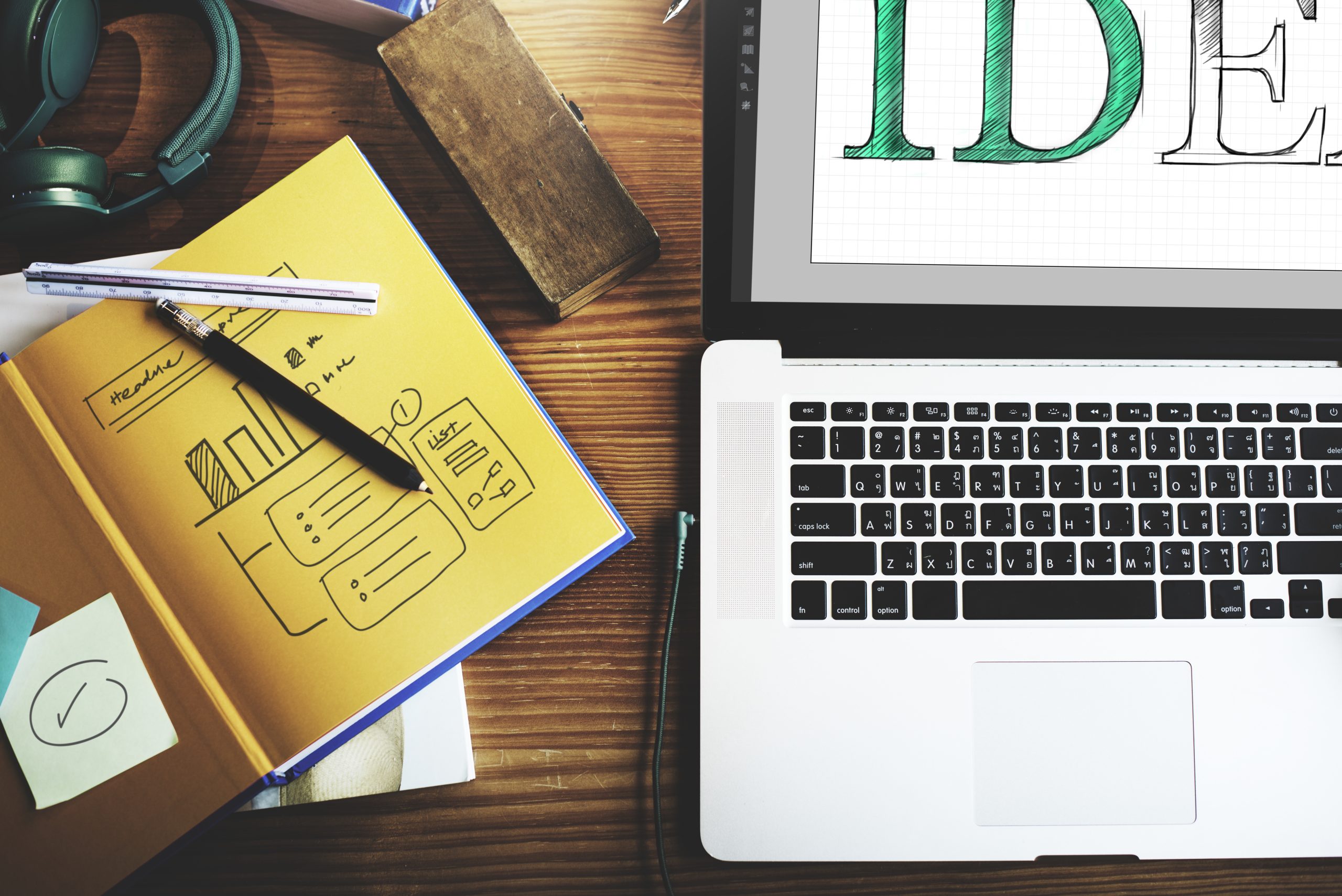When it comes to choosing between Adobe InDesign and Photoshop, you might not be aware of the subtleties that make one more suitable for certain design tasks than the other. As you weigh the pros and cons of each software, discovering the nuances in their functionalities can significantly impact the outcome of your projects. Stay tuned to unravel the intricacies of InDesign and Photoshop, and uncover which tool aligns best with your design objectives.
Key Differences Between InDesign and Photoshop
When deciding between InDesign and Photoshop for your design projects, understanding the key differences between the two software tools is essential for making informed choices. In terms of layout design, InDesign shines as a desktop publishing tool, ideal for creating multipage documents like brochures, magazines, and interactive media. It excels in handling heavy text, vector artwork, and images, offering multiple page capabilities and professional typesetting features. On the other hand, Photoshop is a powerful photo and design software primarily used for pixel-based artwork. It is best suited for tasks like photo editing, developing banner ads, and working on single-page designs. While InDesign offers advanced typography features and is preferred for layout design and multipage documents, Photoshop provides extensive image manipulation tools catering to digital art and graphic design needs. Understanding these distinctions will help you choose the right tool for your specific design requirements.
Design Capabilities of InDesign
Understanding the capabilities of InDesign allows you to leverage its strengths for your design projects effectively. InDesign offers a range of features that cater to different design needs, from layout versatility to professional typesetting. Here is a breakdown of key design capabilities of InDesign:
| Layout Versatility | Typography Options | Interactive Media | Professional Typesetting |
|---|---|---|---|
| Allows flexible and intricate layout designs | Offers a wide variety of typography tools | Supports interactive elements for digital publications | Ensures precise and professional text formatting |
| Enables the creation of multi-page documents with ease | Provides options for customizing fonts, styles, and spacing | Incorporates audio, video, and hyperlinks for engaging content | Maintains consistency in text alignment and spacing |
| Ideal for projects like brochures, magazines, and e-books | Allows for hierarchy and emphasis in text through styling | Enhances user experience with multimedia elements | Ensures readability and visual appeal in printed materials |
| Facilitates seamless integration of text and images | Enables creative text wrapping and paragraph styles | Enhances user engagement through interactive features | Ensures high-quality printed output |
InDesign’s focus on vector artwork, combined with these capabilities, makes it a powerful tool for professional design projects.
Design Capabilities of Photoshop
To fully grasp the design potential of Photoshop, explore its robust image editing capabilities and creative tools. Photoshop is renowned for its unparalleled image editing features, making it a powerhouse for graphic design, digital art creation, print media, and web graphics. With Photoshop, you can manipulate images at a pixel level, apply intricate filters, and create visually stunning compositions. Whether you are retouching photos, designing intricate graphics, or developing web assets, Photoshop offers a wide array of tools like layers, masks, and blending modes to bring your creative vision to life. Its versatility in handling various color modes such as RGB and CMYK further enhances its suitability for both digital and print design projects. In conclusion, Photoshop stands out as a go-to software for professionals looking to delve into a world of limitless design possibilities across different mediums.
File Types Supported by InDesign
InDesign supports a diverse range of file types, catering to various design and publishing needs across different formats.
- Print layouts
- Interactive documents
- Typography options
InDesign allows you to work with vector graphics, ensuring high-quality outputs that can be scaled up or down without losing clarity. This feature makes it ideal for projects like logos or illustrations where scalability is crucial. Additionally, the typography options in InDesign give you precise control over text, allowing for creative layouts and professional designs. Whether you are creating brochures, magazines, or interactive PDFs, InDesign’s support for different file types ensures that you can bring your vision to life with ease. Its scalability options further enhance the flexibility of your designs, making it a powerful tool for various design projects.
File Types Supported by Photoshop
Incorporating a diverse array of file types, Photoshop facilitates versatile and dynamic design projects that encompass various visual elements and formats. For graphic design and photo editing, Photoshop supports a wide range of image formats including JPEG, PNG, GIF, and TIFF, making it suitable for both print and web media. It excels in handling raster images, providing detailed editing capabilities for pixel-based projects. Additionally, Photoshop offers export options like PNG, JPEG, GIF, and even SVG, ensuring compatibility and flexibility for different design projects. Whether working on intricate digital artwork or enhancing photographs, Photoshop’s support for raster images and export options caters to a broad spectrum of design needs. Its ability to handle various file types and provide extensive export options makes it a valuable tool for designers across different industries.
Pricing and Subscription Options Comparison
How do the pricing and subscription options for Adobe Creative Suite applications compare, and what factors should you consider when choosing a plan? When evaluating the pricing and subscription options for Adobe Creative Suite applications like Photoshop and InDesign, several key factors come into play:
- Cost effective plans
- Analyze the pricing tiers and determine which plan aligns best with your budget and design needs.
- Subscription flexibility
- Consider the flexibility of subscription options, such as monthly vs. annual plans, to ensure it fits your usage requirements.
- Feature comparison
- Compare the features included in each plan to identify which offers the tools necessary for your design projects.
Moreover, it’s essential to explore additional aspects like student discounts and overall value for money to make an informed decision on selecting the most suitable Adobe Creative Suite plan for your design endeavors.
Project Suitability: Indesign Vs. Photoshop
For design projects requiring intricate pixel-level work on high-quality images, choosing between InDesign and Photoshop hinges on the specific project’s requirements and desired outcomes. When it comes to graphic design and print media, Photoshop excels in detailed photo editing and graphic design tasks. Its robust tools for manipulating images, color correction, and layer masking make it a go-to choice for pixel-based artwork. Conversely, InDesign is better suited for layout design and digital publishing needs. With its focus on creating multi-page documents, interactive media, and vector-based projects like logos, InDesign shines in handling heavy text and complex layouts. While Photoshop is ideal for single-page designs and raster-based projects, InDesign’s strengths lie in its ability to produce professional layouts for brochures, magazines, and eBooks. Understanding the distinct strengths of each software is crucial in determining the most suitable tool for your specific design project.
Considering Alternative Design Tools
If you’re looking to explore additional design tools beyond Adobe’s suite, consider evaluating alternative software options for your creative projects. When considering alternative tools for graphic design and visual projects, here are some options worth exploring:
- Canva: Canva is a user-friendly design platform that offers a wide range of templates, graphics, and tools for creating various visual projects.
- Sketch: Sketch is a popular design software specifically tailored for digital design projects, offering a robust set of features for UI/UX design and vector-based illustrations.
- Affinity Designer: Affinity Designer is a professional-grade design software that provides extensive creative options for graphic design, including capabilities for both raster and vector-based projects.
These alternative tools can offer unique features and functionalities that may complement or even enhance your current design workflow. As the design software landscape continues to evolve, exploring different options can open up new creative possibilities for your projects.




